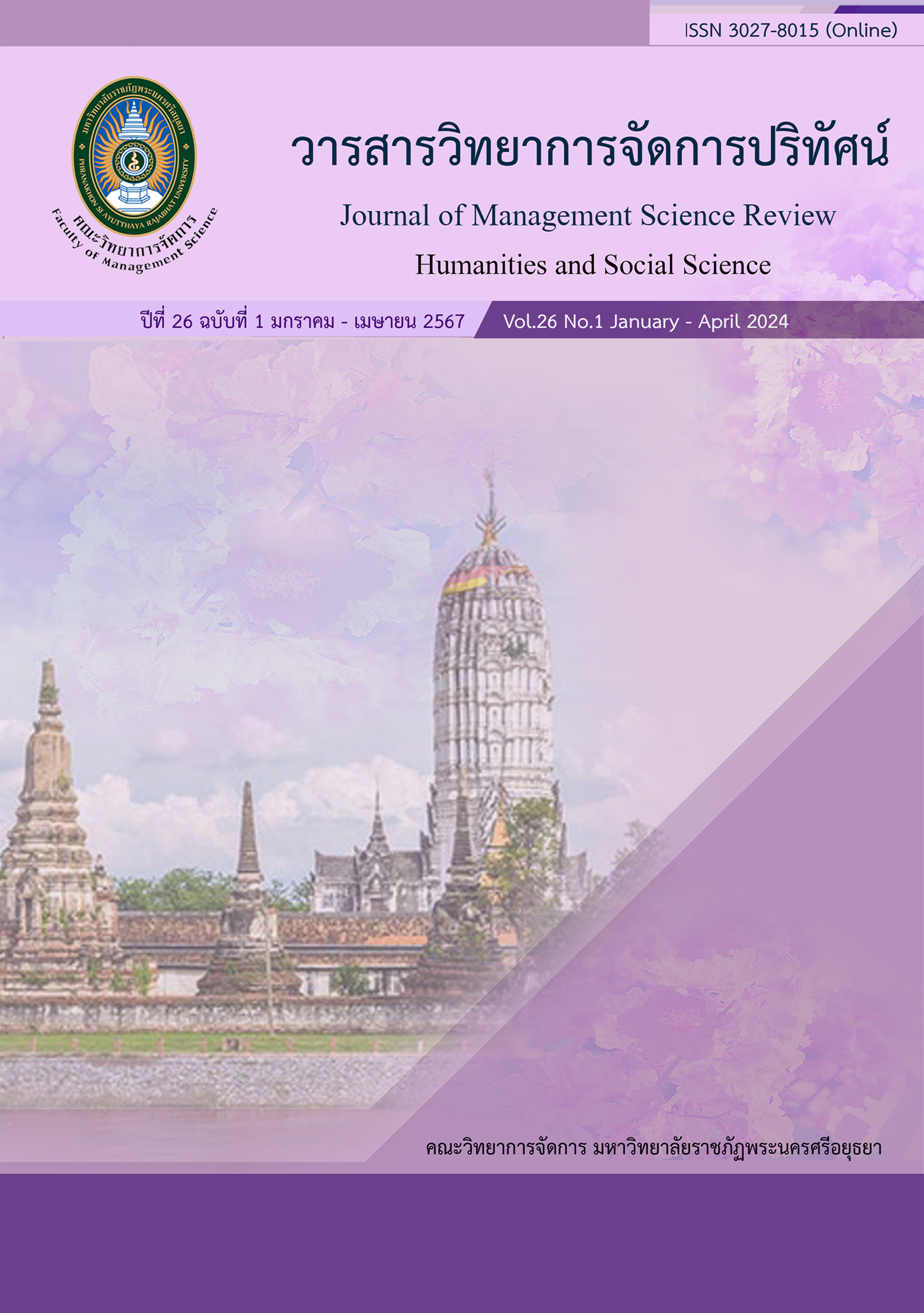การคัดเลือกที่ตั้งศูนย์กระจายสินค้าด้วยรูปแบบการถ่วงน้ำหนักเพื่อเพิ่มศักยภาพการส่งมอบสินค้ากรณีศึกษา บริษัทน้ำดื่มแห่งหนึ่ง
คำสำคัญ:
การคัดเลือกที่ตั้งศูนย์กระจายสินค้า, รูปแบบการถ่วงน้ำหนัก, ศักยภาพการส่งมอบสินค้าบทคัดย่อ
งานวิจัยนี้มีวัตถุประสงค์เพื่อ 1) ศึกษาการคัดเลือกทำเลที่ตั้งศูนย์กระจายสินค้า 2) ศึกษารูปแบบการถ่วงน้ำหนักในการคัดเลือก 3) เพิ่มศักยภาพการส่งมอบสินค้าหลังคัดเลือกศูนย์กระจายสินค้า รูปแบบการศึกษาวิจัยเป็นเชิงปฏิบัติการ โดยใช้วิธีการถ่วงน้ำหนักปัจจัยในการคัดเลือกที่ตั้งศูนย์กระจายสินค้า และแบบสัมภาษณ์เป็นเครื่องมือ
ในการเก็บรวบรวม และวิเคราะห์ข้อมูล ผลวิจัยพบว่า 1) ผลการคัดเลือกทำเลที่ตั้งศูนย์กระจายสินค้า โดยรูปแบบการถ่วงน้ำหนักที่มีค่าสัดส่วนการถ่วงน้ำหนักปัจจัยของบริษัทน้ำดื่มแห่งหนึ่ง ร้อยละ 88.25 เลือกจังหวัดร้อยเอ็ด ที่มีผลต่อศักยภาพส่งมอบสินค้าของบริษัทน้ำดื่มแห่งหนึ่งมากที่สุด รองลงมาจังหวัดอุบลราชธานีร้อยละ 79.75 และจังหวัดมหาสารคามร้อยละ 77.50 2) ปัจจัยในการคัดเลือกทำเลที่ตั้งศูนย์กระจายสินค้าของบริษัทน้ำดื่มแห่งหนึ่ง ได้แก่ (1) แหล่งลูกค้า (2) กำลังซื้อของลูกค้า (3) ค่าเช่าอาคาร (4) ขนาดพื้นที่อาคาร (5) ความปลอดภัย (6) คลังสินค้าคู่แข่ง และ (7) ระยะทางจากศูนย์กระจายสินค้าถึงลูกค้า ซึ่งมีความเหมาะสมและสามารถเพิ่มศักยภาพการส่งมอบสินค้า 3) ศักยภาพการส่งมอบสินค้าหลังคัดเลือกศูนย์กระจายสินค้าจังหวัดร้อยเอ็ด มีศักยภาพสามารถตอบสนองความต้องการถูกต้อง รวดเร็ว และสามารถส่งมอบสินค้าตามกำหนดเวลาได้ร้อยละ 95 องค์กรต้องพิจารณากิจกรรมหลักที่สามารถทำกำไร (Core Value) ประกอบการพิจารณาเพื่อให้สามารถตอบสนองที่มีความยืดหยุ่นว่องไวในทุกสถานการณ์
เอกสารอ้างอิง
Apiprachayasakul, K. (2013). Warehouse and distribution management. Bangkok : Focus Media and Publishing.
Edwards, J.D. (2001). Produstion & Distribution Planning 4.0 user’s guide, Denver Knolmayer.
Erbıyık, H. Özcan, S. & Karaboğa, K. (2012). Retail store location selection problem with multiple analytical hierarchy process of decision making an application in Turkey. Procedia-Social and Behavioral Sciences, 58, 1405-1414.
Hall, R. E. (2001). The stock market and capital accumulation. American Economic Review, 91(5), 1185-1202.
Khaojoi, K. (2017). Comparative Study of Consumer Satisfaction on Location Selection of Fresh Market in the district of Phetchabun Province: Case Study of Thai Phatana Thaphol Market, Municipality Market 2 and Municipal Market 3. Mangraisaan Journal, 6(2), 37 – 52.
Kitpridaborisut., B. (2008). Social science research methods. Bangkok: Chamchuri Products.
Nong, T. N. M. (2022). A hybrid model for distribution center location selection. The Asian Journal of Shipping and Logistics, 38(1), 40-49.
Promngam, P. (2020). Factors Affecting the Decision of the Location Warehouse for Distribution: A Literature Review. Academic Journal Bangkokthonburi University, 9(2), 110 - 122.
Roscoe, J.T. (1975). Fundamental Research Statistics for the Behavioural Sciences. New York: Holt Rinehart & Winston.
Sankaew, T. (2010). The Study of Location Selection for Steel Pipe Distribution Center in 14 Province of Southem Region. [Master’s thesis]. King Mongkut’s University of Technology Thonburi.
Songthuan, T. (2015). Location Analysis for Dried-Shrimp Distribution Centers: A Case Study Dried–Shrimp Industries in Nakhon Si Thammarat. WMS Journal of Management, 4(3), 24-33.
Stump, P. (1998). Vihicle Routing and Scheduling for trunk hauluge. In fleisch-mann Advanges in distribution Logistics, Berlin, Heidelberg: Springer Berlin Heidelberg, 341 - 371.
Supha, W. & Reankratok, K. (2018). A decision on Warehouse Location Selection for a Chemical Company. Dhurakij Pundit University.
Tabak, Ç., Yıldız, K., & Yerlikaya, M. (2019). Logistic location selection with Critic-AHP and VIKOR integrated approach. Data Science and Applications, 2(1). 21-25.
The National Bureau of Agricultural Commodity and Food Standards. (2012). Strategic Framework for Food Management in Thailand. Retrieved August 8, 2023, from https://extranet.who.int/nutrition/gina/sites/default/filesstore/THA%202012%20Strategic%20Framework%20for%20Food%20Management.pdf
Waiwanichkul., N. & Udomsri., C. (2002). Bangkok Business Research Methods. Bangkok: Chulalongkorn University.
Zylstra, K. D. (2005). Lean distribution: applying lean manufacturing to distribution, logistics, and supply chain. n.p.: John Wiley & Sons.





